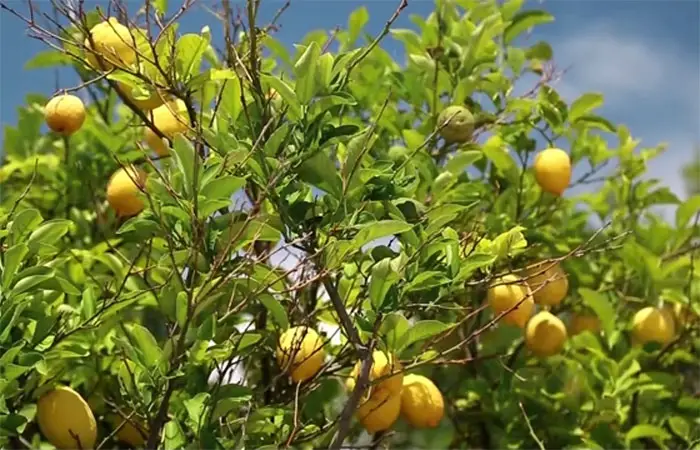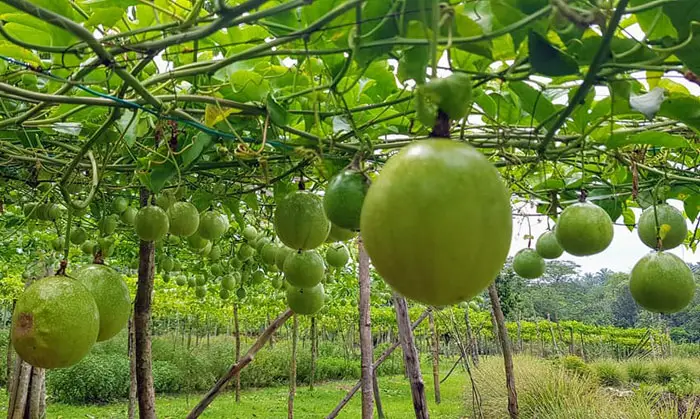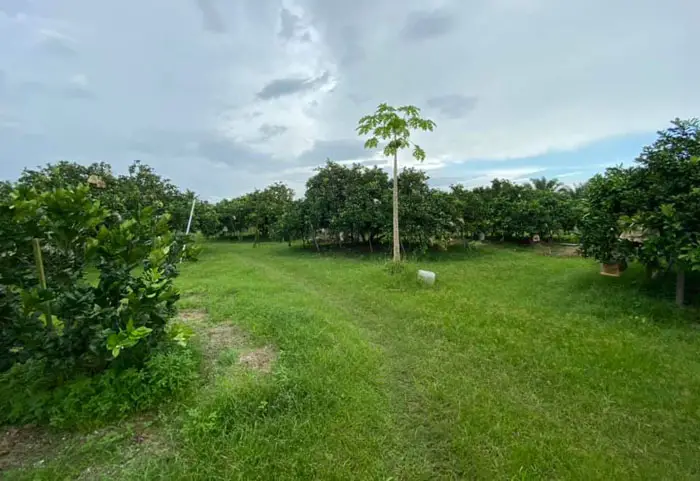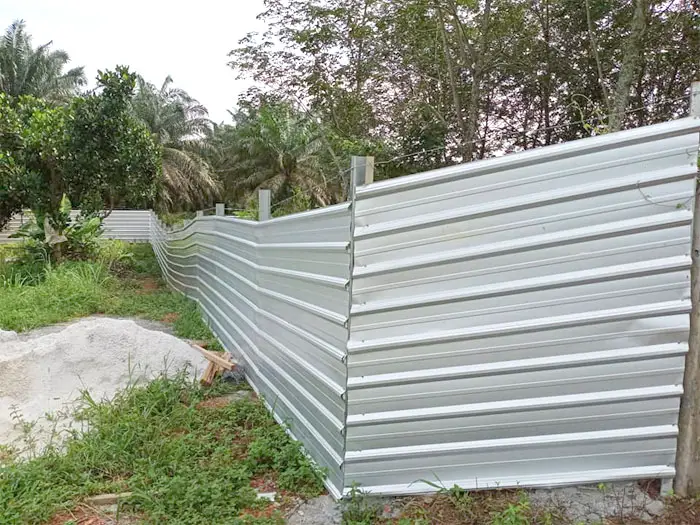Imagine having your food right at your fingertips. You can walk into your backyard and pick the fruit you’ll have for breakfast. Or even better yet, you produce an orchard where you can sell produce while also having access to an instant meal.
Planting an orchard has become simpler for people to try, especially with readily available information. With these helpful tips, you can learn the ins and outs of planting an orchard, so you don’t have to search everywhere.
Choose Your Trees
Before you can even decide what you will be growing, you need to figure out what type of orchard you will be cultivating and have more than one type of tree or plant. You will have to take some considerations when making your decision:
- The type of tree
- Amount of sun needed
- Location
- Soil
- Type of weather
Specific types of trees and plants can’t grow everywhere. If you want to grow an orange orchard, you need to be in an area with more tropical weather that doesn’t get below freezing. If the environment gets below this point, your trees will either die or get severely damaged.
You will have to complete a little research about your location. You will need to search what types of orchards you can grow within your environment or in your area. Many breeds of trees grow in specific areas, and so this is necessary for your success.
You will also want to figure out how much sun these trees or plants need. You don’t want to start a small orchard where it doesn’t shine enough for your orchard to thrive. Sun, soil, and environment are all imperative for the conditions of your plants to accomplish full bloom.
Types Of Orchards
There are four types of orchards you can choose from when deciding what you want to do. Now you can mix these types, but remember that each has its conditions you will need to meet for it to flourish.
Here are the four types of orchards you can create on your land:
- Fruit
- Nuts
- Seeds
- Other (if it doesn’t fall under the previous categories)
Fruit Orchards
There are many types of fruit trees and shrubs you can plant. If you are looking to get citrus fruits like oranges, lemons, and limes, this will be a smaller orchard. The environmental conditions are stringent for this type of orchard.
You can choose from a variety of other fruits like apples, pears, and more. Look into specific breeds of apples. Some apples do well in hardier areas while others do not. You have so many options to pick from that you won’t be at a loss when planting.
Nuts Orchards
Nuts have become quite popular when choosing what type of orchard to start. These types of nut farms include walnuts, almonds, pecans, and cashews. You will also find that coconuts and cocoa are included in this category.
These types of orchards can take longer for you to yield any results. Some nuts aren’t produced for ten years. Don’t expect a quick return.
Seeds Orchards
These types of orchards are mainly to produce seeds to sell and plant. These orchards are more for commercial use rather than small farmers.
Other Orchards
Anything that doesn’t fall under the previous three orchards type will fall into this category. For example, if you want to start a Christmas Tree orchard, this would fall under “other.”
Pick A Spot
You can choose to make a large orchard and plant most of your land, or you can stick to a small area planting a handful of trees. You need to take into consideration what the tree needs. Some trees require a specific amount of sunlight or the composition of the soil.
You want a place where the soil is well-drained. Anywhere where the water pools or becomes stagnant can ruin the roots and make it difficult for the tree to thrive.
For one of the best spots, look at north-facing slopes. You will find that temperatures do not fluctuate as much on this type of slope compared to a south-facing slope. Fluctuating temperatures can harm your trees and increase the risk of damage.
Make sure this area is not a wide-open tree with no surrounding trees. High winds can break boughs and cause fruits to fall before they are ready. You don’t want this to happen, especially if you plan on selling your product to companies or at the farmer’s market.
Check Your Soil
You will need to check your soil. There are a lot of qualities the soil should have before you decide whether you plant there. If necessary, you can change the soil composition, but remember, this will be an extra step for you.
Your soil should have these qualities for your trees to be planted there:
- Well-drained
- Not compacted
- The pH of 6 (Slightly acidic
- 2 feet soil depth
Well-Drained
You don’t want to have stagnant water, so you need to pick soil that drains well. If you see water pooling when there is heavy rain, it doesn’t drain well, and you may need to find another spot to plant your orchard.
Not Compacted
When the soil is compacted, it is difficult for the roots to thrive. Compacted soil also makes it difficult for water to drain. You can fix this issue pretty simply.
First, you will have to remove anything that is making the soil compact. Sometimes you may find buried rubble and such. The rubble and any other objects can be taken out of the ground and replaced with better soil.
You can also till the soil. This action will take a little extra time, and if you want it completed quickly, you will need to rent or buy large equipment. You can then add mulch to the soil to make the soil loose and uncompacted.
The pH Of 6
The pH of your soil is important because many trees and plants have to have a specific pH level for them to thrive properly. If the pH is offset, it could poison or kill the tree.
For most orchards, you want the pH to be that of 6. This pH level is slightly on the acidic side. A neutral pH is 7 (which is what water is at).
You can figure out your soil’s pH by buying a kit online or at a local store. For best results, you will want to test random areas of your soil. Don’t just stick with one spot because the soil composition can change depending on location.
If your soil is not where you want it, there are many ways you can change the soil composition. If your pH is over 7, it is more basic, and the pH needs to decrease. If your pH is under 6, this means it is more acidic, and most trees can’t live within these conditions. You will have to increase the soil pH.
Decreasing Soil pH
When decreasing your pH, you are trying to make your soil more acidic. To do this, you can add two different materials to your soil: aluminum sulfate and sulfur. Each one has a particular way when added to your soil.
Aluminum Sulfate
Using this material is easier to use when trying to change the pH of the soil. When you mix this with the soil, the aluminum sulfate dissolves and immediately changes the pH. If you need to find how much you need per how much you need to decrease the pH, you can find it here laid out in a chart.
Sulfur
Sulfur takes a little longer to change the pH of the soil. Depending on the composition of the soil and what type of sulfur you buy, you will find transforming acidity in the soil could take several months. You can find a chart here to help you with this.
For the best results, you can combine both sulfur and aluminum sulfate. Together they are most effective in decreasing the pH level to 6. Using this technique is even better when your soil is quite high.
Increasing Soil pH
To make the soil less acidic, you will need to add some type of lime or limestone. This product is considered a base and can raise the pH of the soil. But there are a few things that you will have to find out before you start mixing in lime material.
You will need to consider the following:
- The texture of the soil.
- Composition of soil.
- The pH level of the soil.
- The plant you are putting in the soil.
You want to be careful with how much limestone and which form you put in. You need to mix it in slowly to get the right pH for the level you desire. You don’t want to change the levels too quickly because you can end up going back and forth on the pH scale. You don’t want that.
If you can’t get limestone for some reason, you can use wood ash to increase the pH of your soil. Slowly mix the ash into the soil and test it until you get the desired pH level.
2 Feet Soil Depth
Your soil should at least be two feet deep, meaning that this soil is uncompacted. You shouldn’t be hitting clay, rock, or compacted dirt within the first few feet. If you do, this can cause problems for your roots.
When trees are planted in shallow dirt, they can easily topple over. This is because roots cannot grow deep enough to maintain the weight of the tree above ground. You do not want this to happen, especially if you don’t have a barrier of trees protecting your orchard.
Shallow soil can also make it easier for your roots to dry out. When a drought hits, shallow dirt can remain dry and hot. When this happens, it dehydrates your trees and can even damage the roots. Once the roots are damaged, it can stunt a tree’s growth, or even worse; it can kill it.
Figure Out Your Water Point
Your water point is how easily accessible your orchard will be to water. Your trees will need quite a bit of water, so having this access closer than farther away will only help you.
You can create sprinkler systems or irrigate water to your trees, but this will be more complex. This will also mean more upfront costs, and if you are on a budget, this can put a little dent in it.
When irrigating water, consider using rainwater. Rain is great for soil and has a healthy composition that is perfect for nutrients. This also means you don’t have to use your water system and recycle from the earth.
Keep in mind the watering point for the future as well. Droughts often happen, so you will have to think about these environmental factors when you are planning out your location. Droughts can kill your orchard, especially if you can’t get water to them regularly.
Cultivate The Soil
Cultivating your soil is important, even if it has been cultivated in the past. You don’t want your soil to be compact with a lot of large rocks and material.
The best way to cultivate your soil is to rent a tractor and plow the location you want to plant your trees. Loosening up the dirt allows the roots to grow and thrive without being confined to one location.
Try not to plow your soil too deeply. If you do this, it can cause the topsoil to dry out quickly and be detrimental to your orchard’s health. If you do end up cultivating the soil a little too deep, this is an easy fix. You can lay mulch over the topsoil, and it will keep the ground moist.
Design The Layout Of Your Orchard
Designing the layout of your orchard is very important. You have to consider many things. Here are things to keep on your mind when you design your orchard:
- Spacing
- Maximize with variety
- Consider the future
Spacing
You have to make sure your trees are spaced out enough apart but not too much that you don’t waste any land. If you place them too close together, you can have trees competing for nutrients and cause some of your trees to die.
Normally, orchards are placed in a grid design, in rows and from North to South. Doing this optimizes the amount of sun each tree grows. With fruit trees, you should plant them about 5 meters apart. The taller the tree, the more space you will need between each.
Spacing is simple when you are growing pine trees or fruit trees, but it is a different story when you are planting nut trees. Some of these types of trees can grow from 20 or 30 feet to about 100 feet.
There needs to be plenty of room between these trees because roots need to spread enough to balance the weight of the trees above ground. If you place them too close together, the weaker tree will die from malnutrition.
Always double-check your placements. A great way to figure out if you have a great design for your orchard is to map it out beforehand. You can draw out a map and then do the same on the land. Preplanning will give you some sort of idea of how your orchard will be designed.
Maximize With Variety
You can maximize your growth by adding a little variety. You can even include planting berry plants. Most trees grow best when there are at least two types of trees.
You will have to take into consideration if a fruit plant needs fertilization. Many apple trees need to be pollinated by other trees. You can check different catalogs to see which trees pollinate each other. You can find pollination groups for apple trees here.
Many fruit trees can pollinate themselves. These fruit trees include:
- Apricots
- Peaches
- ‘Improved Meyer’ lemons
- ‘Northstar’ sour cherries
Consider The Future
When designing your layout, always consider the future. The harvest will be a big part of how your orchard should be mapped out. If you use large machinery to pick your harvest, you will want your trees far enough apart so the machinery doesn’t damage your product and can easily maneuver around.
Some commercial companies will design their trees in geometric shapes. This type of design can aid in the tree production of fruit. You also want to integrate any water sources to make irrigation simpler and provide a water source for helper animals and insects.
Plant Your Trees
You have finished all the planting; now, you need to plant the trees. You can plant your trees in many ways, but the easiest and most common is buying saplings from a tree farm. These aged trees offer more success than if you were to try and grow your orchard from seeds.
Here are a few tips to planting your tree for better results with the roots expanding into the surrounding ground:
- Dig a little deeper than necessary.
- Backfill the hole with soil.
- Free some of the outermost roots.
- Water the new trees regularly.
- Don’t add fertilizer during planting.
- Bare roots are more resilient.
- Mulch after trees has rooted.
Pay attention to your trees, and you will find that they will tell you what they need. If they seem to be drying out, give them a little more water. If your tree is starting to droop, it may need nutrients or some water. Water is always the most important thing to remember when first planting your trees.
Protect Your Orchard
You have planted all your trees, and they are thriving, but your job is still not over. You will need to protect your trees from environmental factors, insects, and more. You don’t want your trees to become damaged before you can harvest your fruit.
You can do several things to help protect your trees from a multitude of threats. Those protections you can put in place are:
- Plastic guards
- White fabric wraps
- Fencing
- Encourage helper insects
- Coat trees with a special blend
- Sacrificial trees
Plastic Guards
You can wrap the trunks of your trees in a plastic guard. These are great to protect from extreme weather changes. You will find that when a frost comes or when winter comes, these guards will reduce the likelihood of damage.
This product can help protect the trees from unexpected frost and protect the trunk from any other debris that may be thrown at them. These types of debris often happen when mowing, and you don’t know when an accident might occur.
These guards also protect from small rodents that can be found chewing at the bark. This shield will also deter some insects. It may not protect from all of them, but it can help out a little bit.
White Fabric Wraps
Plastic guards protect from weather and rodents, while white fabric wraps will help protect from direct sunlight. If your trees are in danger of having too much sunlight, then these are perfect for you. It deflects the sunlight and does well when your location is going through a drought.
Fencing
Sometimes larger animals like to have a snack off the trees. Deers are one culprit that you have to be aware of when maintaining your orchard. To do this, you can put up fencing. Pick out welded wire fencing for the best protection.
Deers are great at jumping high, so if a deer has been bugging your orchard, you will need to put up an 8-foot fence. Any lower fence can be cleared by one hop of a deer. Try not to put a horizontal barrier on the top because deer can figure out the height this way and jump the fence more easily.
Encourage Helper Insects And Animals
Unlike most people believe, not all insects are out to destroy your crops. You will find that many insects help protect against those destructive pests. Some insects, as well as some animals that will protect your fruit and trees, are:
- Ladybugs
- Praying mantises
- Frogs
- Birds
These are natural predators for pests like apple maggots or aphids. They will chase them off and prevent any infestations. Once you have an infestation, it is quite difficult to get rid of the pests.
You can buy these types of helper insects and animals from stores, but you can naturally do this. All you have to do is provide a water source for these predators. With a water source, you will find that birds and frogs will hang around and eat all those bad insects.
When creating a water source, you can build yourself a small pond for them to live in, or you can provide little birdbaths throughout your orchard. Either way, it is simple for you to make sure they have a water source to draw them to your orchard.
Coat Trees With A Special Blend
Squirrels can negatively impact your orchard and be quite bothersome. They will not be deterred like rabbits by a plastic guard, and you may have to go to more extreme measures. You can do this by making a blend of pepper sauce and soap.
This special blend helps deter the squirrels because of the bad smell and they can’t grip the tree to climb it. They won’t like the taste either and will less likely try to pick fruit from a smelly source.
Sacrificial Trees
If the squirrels don’t seem to be deterred by the special blend, you may have to plant sacrificial trees. These sacrificial trees will feed any pests that you can’t seem to get rid of.
This separate orchard should be planted a ways away from your orchard. If you plant them too close to your main trees, you may find the squirrels and other pests moving to those. You don’t want this happening, so add a little distance.
Tips For Planting An Apple Orchard
Apple trees are a popular choice when creating your orchard. Just like with other orchards, you will need to take proper care of them to make them thrive. You will find that apples may need a little different kind of care.
Here are some tips when you choose to plant an apple orchard:
- Apples need friends.
- Some apples need pollination.
- Keep the pH at 6.
- Don’t plant in a frost pocket.
- Keep the area around trees clean.
- Dwarf, semidwarf, or column trees are wonderful choices.
- Prune them regularly.
- Make sure the air is well circulated.
Be aware that apple trees are often the victims of pests so keep an eye out for these. Make sure to stop any pests before it turns into an infestation. Once at this level, it will be hard for you to rid of the infestation and save your apples.
You will find that these tips and the previous tips will make your orchard a success.
Outro
When it comes to designing and growing an orchard, there is a lot of commitment. You will need to be prepared to spend a lot of time taking care of it. It will be like your child that you nurture and grow. You will find a little care and love, and your orchard will blossom.
Did you find this post useful? Would you like to get back to it later? Save THIS PIN below to your best gardening and fruit garden boards on Pinterest! Thanks 🙂







